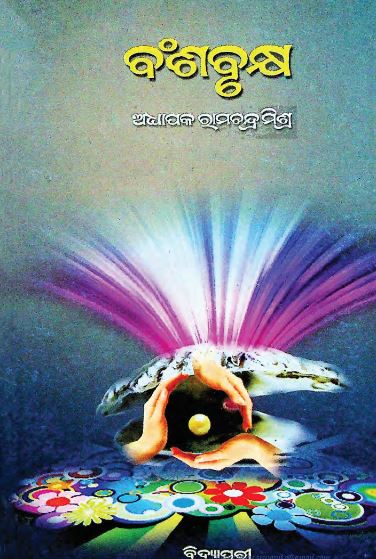Bansabruksha, a significant contribution to contemporary Odia literature by Ramachandra Misra, was published in 2010 and has since garnered acclaim for its evocative storytelling and deep exploration of human emotions. This collection embraces a variety of literary forms, including sub-drama and short stories, weaving a rich tapestry of narratives that reflect the complexities of life, relationships, and societal norms.
At the heart of Bansabruksha lies the author’s ability to merge the lyrical with the poignant, bringing forth tales that resonate powerfully with readers from various walks of life. The title, which translates to “The Bamboo Tree,” symbolizes resilience, growth, and the interconnectedness of life—characteristics that are intricately woven into the fabric of the stories presented in this collection. Misra draws inspiration from the natural world, infusing his narratives with vivid imagery and metaphoric depth that elevate his tales to a universal plane.
The collection is notably structured around the themes of nostalgia, social dynamics, and the nuances of human relationships. Each story encapsulates the essence of Odisha’s culture and traditions, effectively transporting readers to the heart of rural and urban Odia life. Misra’s keen observation of human behavior allows him to create characters that are not only relatable but also deeply layered with emotion and motivation. Readers meet farmers, teachers, lovers, and dreamers, each grappling with their unique challenges, triumphs, and the intricacies of interpersonal relationships.
In the sub-drama segments of “Bansabruksha,” Misra adeptly uses dialogue and interactions to convey deeper meanings and social critiques. These pieces reveal the undercurrents of conflict and reconciliation within families and communities, often highlighting the struggles faced by individuals marginalized by societal expectations. The sub-dramatic elements serve to enhance the emotional gravity of the collection, as they provide space for characters to express their thoughts and desires in a dynamic manner. With poignant dialogue and vivid scenes, Misra captures the essence of human experiences, making the reader reflect on their own lives and the broader societal issues at play.
One of the notable aspects of “Bansabruksha” is Misra’s nuanced portrayal of gender dynamics. The stories confront traditional gender roles and explore the aspirations and frustrations of women in a changing society. Through the lens of various female characters, the collection addresses themes of empowerment, societal pressure, and the quest for identity. Misra’s sensitive treatment of these topics invites readers to engage in meaningful dialogues about feminism and equality in the modern context.
Bansabruksha is not just a collection of stories; it is a reflection of the rich tapestry of Odia culture, interlaced with timeless themes that resonate across generations. Ramachandra Misra’s prose is marked by its lyrical quality, and his deep empathy for his characters imbues every narrative with authenticity and heart. This work stands as a testament to the power of storytelling in illuminating the human condition, encouraging readers to ponder, connect, and ultimately find solace in the shared experiences of life.
In summary, “Bansabruksha” is a masterful collection that reaffirms Ramachandra Misra’s place in the pantheon of Odia literature. It invites readers on a journey through the landscapes of human emotion and societal dynamics, making it a must-read for anyone interested in the depth and richness of contemporary Odia storytelling.
Books Info
| Books name | Bansabruksha |
| Author | Ramachandra Misra |
| No Of pages | 146 |
| Publisher | Vidyapuri |
| Publication | 2010 |
| Printed At | Sangita Printers |
| Distributor | NA |

